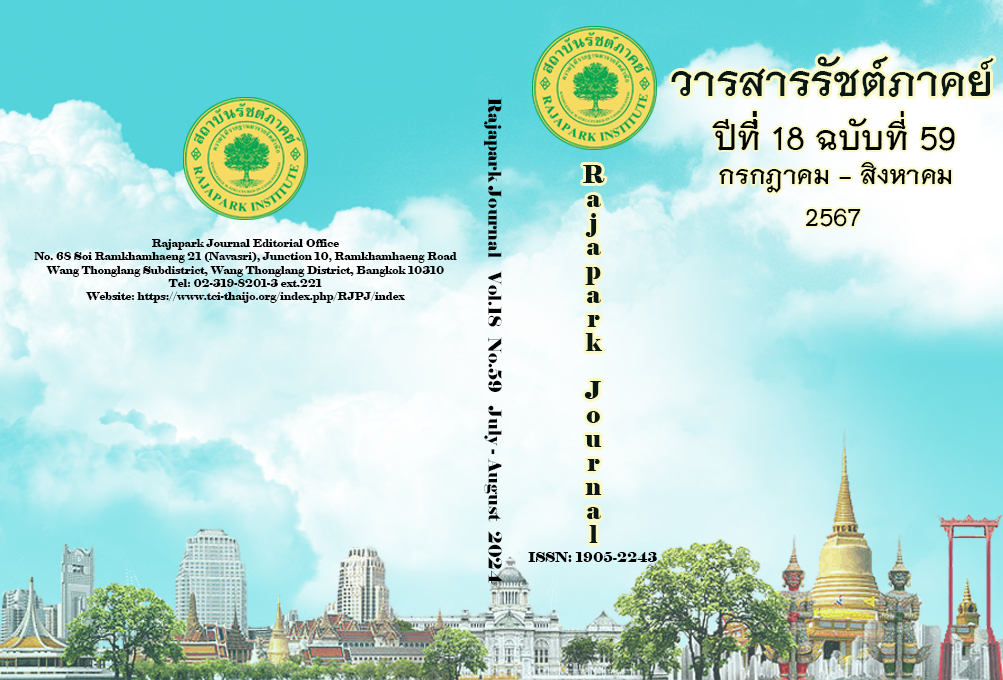Developing Computational Thinking Skills of 8th-Grade Students Using Animations Integrated into Blended Learning in Flipped Classroom
Main Article Content
Abstract
Currently, animations have been widely used as a learning media. It is a key component to thriving learning and understanding for learners appealed to by sound and animations. Computational thinking skills are included in computing science courses in which a student still has a lack of understanding and low-level achievement. The objectives of this experimental research were: 1) to design and create animations to develop computational thinking skills in the form of motion graphics; 2) to develop a computational science learning package based on blended learning management in a flipped classroom integrated with the developed animations; 3) to develop computational thinking skills and learning achievement using the developed learning package; and 4) to study the satisfaction towards the learning management. The sample used in this research was 30 students who were studying in semester 2 of the academic year 2022 at a school in Det Udom District, Ubon Ratchathani Province. The research tools include motion graphic-based animations and a learning package based on blended learning management in the flipped classroom integrated with animations. The data were analyzed by percentage, mean, standard deviation, and t-test collected from learning achievement tests, computational thinking skill tests, and questionnaires. The research results were as follows: 1) the efficiency of our developed animations and computational science learning package was 81.11/81.00, 2) the average of students’ computational thinking skills was good, 3) the average post-learning achievement score was statistically higher than that of the pre-learning achievement score, and 4) the average of students’ satisfaction was at the high level.
Article Details

This work is licensed under a Creative Commons Attribution-NonCommercial-NoDerivatives 4.0 International License.
Views and opinions appearing in the Journal it is the responsibility of the author of the article, and does not constitute the view and responsibility of the editorial team.
References
Anisa, Y. (2023). Animaker Animation Video Design as a Digital-Based Learning Media with the Theme of Comparison and Scale in Elementary School. Jurnal Ilmiah Pendidikan, 4(1), 184-196.
Brahmawong, C. (2013). Developmental testing of media and instructional package. Silpakorn Educational Research Journal, 5(1), 7-20.
Donlaporn, B. (2022). Development of Motion Graphic by Micro-Learning Concept with Online Learning on Information Technology for Grade 3 Students. Journal of Education Technology and Communication Faculty of Education Mahasarakham University, 5(15), 127-140.
Intira, R. (2011, July – December). Experiment of a Blended Instructional Model for Enhancing Self-Knowledge Acquisition. Journal of Information, 12(2), 108-116.
Jatuporn, T., Teemueangsai, S., & Nachairit, D. (2023). Blended Problem-Based Learning Management Promoting Mathematical Problem-Solving Abilities for 6th-grade Students of Anuban Rattana Kalasin School. Interdisciplinary Academic and Research Journal, 3(1), 295–312. https://doi.org/10.14456/iarj.2023.20
Kang, H.Y., & Kim, H.R. (2021). Impact of Blended Learning on Learning Outcomes in the Public Healthcare Education Course: A Review of Flipped Classroom with Team-Based Learning. BMC Med Educ, 1-8. https://doi.org/10.1186/s12909-021-02508-y
Karma, G. M., Darma, K., & Santiana, M.A., (2021). Blended Learning is an Educational Innovation and Solution During the COVID-19 Pandemic. International Research Journal of Engineering, IT & scientific research, 1-9. https://ssrn.com/abstract=3774907, http://dx.doi.org/10.2139/ssrn.3774907
Ma, L., Hu, J., Chen, Y., Liu, X., & Li, W. (2017). Teaching Reform and Practice of the Basic Computer Course based on Flipped Classroom. The 12th International Conference on Computer Science & Education (ICCSE 2017), 713-716.
Manchima, T., & Thanrat, S. (2020, July). The development of Web – based instruction on Computer Science Subject with Problem – based Learning technique to improve Year 10 students' computational thinking skill. NPRU National Academic Conference, 12(1), 785-794.
Office of the Basic Education Commission Ministry of Education. (2018). Content 4 Technology. In Yuen, P., Punpiti, P., panuakdet, S., Jindaporn, H., & Tassanee, K. (Eds.), Indicators and core learning content Science learning group. (revised edition 2017) According to the Basic Education Core Curriculum 2008, (1), 120-133. http://academic.obec.go.th/images/document/1580786506_d_1.pdf
Pangleela, B. (2017). The Flipped Classroom to Learning and teaching in Thailand. [Unpublished master’s thesis], Kasetsart University. https://www.academia.edu/10373765
Purba, R.A. (2021). The Effectiveness Combination of Blended Learning and Flipped Classroom with Edmodo as a Digital Media Innovation for Learning from Home. Journal of Education Technology, 5(3), 434–442. https://doi.org/10.23887/jet.v5i3.36210
Sisakaw, M. (2022). The Development of English Reading Comprehension Ability by Using Motion Graphic for Secondary I Students. Narkbhutparitat Journal, 14(2), 206-215.
Sahin, E. G., & Arslan, H. O. (2022). The Effects of animated cartoon series on 5th grade students’ environmental literacy subdimensions: The case of “Su Elçileri”. Bartın University Journal of Faculty of Education, 11(2), 432-445.
Thawatchai, S. (2020). Effect of Development the Multimedia (ADDIE Model) to Enhance the Tradition and Culture in the Subject of Development of Electronics Media for Learning. Journal of Technology Management Rajabhat Maha Sarakham University, 7(2), 7-14.
The Institute for the Promotion of Teaching Science and Technology. (2019). Chapter 1 Computational Thinking. In Yuen, P., Laviwan, T., Porawat, V., & Nattee, N. (Eds.), Technology (Computing science) Mathayom, 2(3), 14-36. https://anyflip.com/chrrx/febw/ basic
Tugun, V., Uzunboylu, H., & Ozdamli, F. (2017, August). Coding Education in a Flipped Classroom. TEM Journal, 6(3), 599-606.
Wahyu, A. G. M. (2023). The Effect of The Implementation of Animated Learning Videos on Increasing Students Motivation and Learning Outcomes in Citizenship Education During the COVID-19 Pandemic in Junior High Schools. ASEAN Journal UPI of Science and Engineering Education, 3(2). 139-148.
Wichaiyo, A., Teemueangsai, S., & Juntarasena, U. (2023). The Enhancement of Learning Motivation by Using Blended Learning with Think-pair-share Technique for Prathomsueksa 4 Students of Dondoo School. Interdisciplinary Academic and Research Journal, 3(4), 751–766. https://doi.org/10.14456/iarj.2023.218
Yu, H., Nilnopkoon, P., Klangphahol, K., & Kotchasit, S. (2023). The Influence of Blended Cooperative Learning Instructional Model on the Learning Achievement and Designed Characteristic Behaviors of College Students’ Ideological and Moral Education Course. International Journal of Sociologies and Anthropologies Science Reviews, 3(2), 63–70. https://doi.org/10.14456/jsasr.2023.17


